|
I’ve written many times about what the phrase No Kill means related to animal sheltering. It means we save all healthy and treatable animals and we do not kill them. The foundation of the phrase is the meaning of the word euthanasia. If we end the life of an animal who is suffering or irremediably ill, regardless of where that takes place, that is euthanasia. We do not say we killed your beloved pet. If we end the life of an animal who is not suffering or irremediably ill, we killed that animal. That act has nothing to do with euthanasia. We should not use words differently based on the place where the act occurs. It seems like I see some article, social media post or comment every day that says a shelter is No Kill if it saves 90% of the animals in the shelter. That is just not true. To understand why, we have to take a look back in time and to the source of the 90% figure. When the No Kill movement was first taking hold across the country, there was no benchmark for success. No indicators of how communities could be judged in terms of progress. As he covers in his recent Substack series called, “Yesterday, Today and Tomorrow: Animal Sheltering in the United States,” it was Nathan Winograd (the founder of the No Kill Advocacy Center) who first made reference to the 90% figure. I suspect he regrets having done so because that figure is now being used in ways which have nothing to do with the moral imperative of the movement. Nathan referred to that figure because at the time it was an ordinary byproduct of saving all healthy and treatable animals - about 20 years ago. That was then and this is now. With advances in shelter veterinary medicine and development of the programs and services of the No Kill Equation, some shelters are saving as much as 98 and 99% of animals entrusted to their care. They euthanize animals who are suffering or irremediably ill, including dogs who are not just scared or traumatized, but who are cognitively impaired and present a genuine danger to the public (about 1% of shelter intake). Gone are the days of destroying neo-natal animals who can be saved through bottle feeding programs. Gone even are the days of ending the lives of animals who have severe health issues but who are not suffering and who can have good quality of life in a Fospice (foster+ hospice homes) to live out their glory days. I realize that there are some organizations like the Best Friends Animal Society which still refer to this 90% figure as an indicator of a No Kill shelter or No Kill community. I wish it would just stop. Use of the figure is not only recycled over and over by other organizations and the media, it is serves to encourage deceptive and unethical behavior. I know of shelters that claim to be No Kill when they use a fictional 90% figure to make themselves look good, having deemed some animals “unadopatable” so they will not count against the statistics. These places know the public wants and expects shelters to stop destroying healthy and treatable animals, so they use the 90% figure to act like they are doing better than they are. Some other shelters categorize large number of animals who were destroyed as having been destroyed at the request of the owner (owner requested euthanasia, called ORE) when there was nothing wrong with those animals and they could have been (and should have been) placed into new homes. I also know of other shelters where the focus is so much on the 90% figure that the last 10% does not matter. Once they are sure they will achieve the 90% figure in any given month, they are given tacit permission to destroy dogs who may need more help than others by deeming them dangerous or aggressive. When confronted about this, the response is not “we treated all animals as individuals and gave them every opportunity for a positive outcome.” The response is instead, “we are No Kill because we saved 90%.” No. And for shame. I have long said this a matter of method and not of math. That if a shelter has a mass intake event from a puppy mill, dog fighter or collector and lots of animals are really suffering and euthanasia is performed as an act of mercy, the figure may fall below 90%. That happens sometimes but not often and is not typical of day-to-day shelter operations. If the live release rate at a shelter is 85% in one month related to intake of a large number of suffering animals, the number should not matter. We should never keep suffering animals alive just to look good on paper.
I did a search just now for organizations that still promote the 90% figure as being equivalent to No Kill. You can do the same. The hits included the Best Friends Animal Society, individual shelters from Los Angeles to Santa Fe to Atlanta to Jacksonville, the Washington Post and even Wikipedia. It is in my local news and it is in the national news. We read and hear this 90% figure so often that people just believe it without questioning it. They should. Consider this. If it is your beloved dog or cat who is healthy and treatable ends up in a shelter whether it is due to no fault of your own or even due to your fault, and his or her life is ended, you would not care about a number on a form or a percentage on a piece of paper. You would care about the tragedy of the death of your pet which was both unethical and unnecessary. We should care as much about the needless deaths of all animals who end up in places we dare call "shelters," regardless of who they belonged to or how they got there. It is what the public expects and what we should expect of ourselves as a society.
1 Comment
In one city, cats and kittens who are not adopted or removed from the animal shelter by a rescue group in a week are destroyed. In another city, the shelter adopts out cats, has a barn cat/working cat program, seeks foster homes for cats who have just given birth (and their kittens) and seeks bottle feeders for kittens with no mother. In one city, a dog who is fearful in the shelter environment and cowers in his kennel is destroyed for failure to make eye contact. In another city, a fearful dog who cannot be touched is provided with a bed, a blanket, toys and is slowly fed pieces of hot dog by employees and volunteers to earn his trust and help alleviate his fear so he can be adopted or placed in a foster home. In one city, an elderly dog surrendered by the owner who asked that the dog be euthanized is destroyed within thirty minutes of entering the building. In another city, a dog taken in by the shelter whose owner wanted him destroyed is evaluated and placed in a Fospice (foster hospice) home to live out his glory days in comfort. In one city, the shelter takes in any and all owned pets without any management of kennel space and the majority of those animals are summarily destroyed for space with no regard for their age or health. In another city, the shelter requires pet owners to have surrender counseling to find alternatives to overcome short-term issues problems, to help the caregiver re-home the pet with the help of the shelter staff and takes in only those owned animals the shelter can reasonably care for and as a last resort. So, what is the difference between these two cities? Does one have more money and resources than the other? Is one in a more affluent area than the other? The difference is one of commitment and communication with the public. In communities where healthy and treatable animals are routinely destroyed, there is no commitment to life saving. People can say that “no one wants to kill animals.” Those are merely words. When the actions are to end the lives of those animals, in spite of clear alternatives to doing just that, the words mean little. The public is blamed for treating animals as disposable, when is the shelter which is doing just that. The programs which are used to save the lives of shelter animals have been known literally for decades. Any person who leads an animal shelter in this day and age who is not saving lives has either remained willfully ignorant of those programs at worst or should seek another occupation at best. I realize that some municipal officials know little about shelter operations or how to transition from "catch and kill" to saving lives. I see it as incumbent on shelter leadership to bring those people into the 21st Century by educating them and by explaining why money is better spent on saving lives and ending them. In communities where healthy and treatable animals are saved, there is commitment to life saving which is built on a foundation of compassion. The reasons animals enter shelters are seen for what they are – people problems, not animal problems. The shelter exists not just for public safety purposes, but to help people make better decisions and to help them overcome obstacles. The shelter is seen as a place of support, hope and new beginnings. Because people do not fear the shelter, they are more apt to seek guidance, can be educated to keep their pets from entering the shelter and are less apt to abandon animals (a crime) out of desperation. Nathan Winograd once wrote in his book "Redemption: The Myth of Pet Overpopulation and the No Kill Revolution in America," that the there is a three-step method to becoming a No Kill Community: 1) stop the killing; 2) stop the killing and 3) stop the killing. In the end, this is a choice and there are no excuses good enough to defend the destruction of animals who either were, or could have been, someone’s beloved companion. If we had no longer destroyed healthy and treatable animals in shelters and suddenly began doing that, people would be outraged. They should be as outraged by that business practice now as they are by other forms of animal abuse and neglect. It is inconsistent with public values and a betrayal of the public trust.
I hear all the time that we should not blame the shelters where animals die. Why not? Is that not the place where they are being killed? Change starts and is maintained by the example set by the shelter itself. In places where the killing of shelter pets has ended, it's not because the public suddenly became more responsible. It’s because the shelter changed its culture, either by choice or as a result of pressure, and invited the public to be part of something bigger than themselves. When we help people find alternatives to surrendering animals, families are kept together. When we tell the public about the need for foster homes for special needs animals, neonatal animals, animals struggling in the shelter environment or just to get animals in a new location where we can learn more about then, people step up and make time and room to help those animals. When we tell the public materials are needed for animal enrichment - toys, treats (and yes, hot dogs) - people donate those items. Compassion is a powerful force which can be harnessed and used to change our society. What kind of city do you live in? If it is one where animals go to the shelter to die, I cannot encourage you strongly enough to speak out to make that stop. You are paying for the death. If it is one where the shelter is part of the community and has embraced progressive ideas, count yourself fortunate. And do what you can to help maintain that culture. Make better personal decisions to keep your pets from ending up in the shelter, make sure they can be identified if lost, have a plan for their placement if something happens to you and consider adoption, fostering, donating and volunteering if you can. There are defining periods for all of us which direct the paths we take through life. Deaths of people we love. A lost job which leads to an unexpected career change. Discovery of some new information which changes our world view. Once we reach these crossroads of sorts, there is no going back. Just choosing a way forward. Such was the case for me when I learned about the deaths of animals in our tax-funded animal shelters using our money, in our name and while we are blamed for the process. An author friend of mine, Cara Sue Achterberg, had a defining period in her life recently which is the subject of her new book - One Hundred Dogs and Counting: One Woman, Ten Thousand Miles and a Journey into the Heart of Shelters and Rescues. I first met Cara when I blogged about her previous book - Another Good Dog: One Family and Fifty Foster Dogs. I truly enjoyed her delightful book which introduces us to the world of fostering dogs and to her family, all of whom participate in the process. Cara wrote about what motivated her to foster for a rescue group called Operation Paws for Homes, about her “puppy addiction,” and about all the dogs who passed through her home on their way to new lives. Having fostered so many dogs, Cara was compelled to ask an obvious question – “where are all these dogs coming from any way?” It is a question I wish more people in rescue circles asked of “the system” related to their efforts to save the lives of animals. We are hearing more and more that fostering is the future of animal sheltering and welfare and I believe that’s true. The more animals we have in foster homes, the faster we can place those animals into new homes and the fewer animals we have in shelters which are stressful places for even the most well -behaved companions. But as I wrote about in my book, if we ever hope to get a handle on the number of animals entering our tax-funded shelters, many of whom are summarily destroyed, we have to look at the bigger picture and address the first of many questions which was the one Cara asked - where are all these animals coming from? Cara had finished Another Good Dog and hit the road to tour the book and to see some of the places the dogs came from. She wanted to see them for herself and take a closer look at why there was so much need for fostering. As Cara wrote: Money was good. But money alone would not solve the problem of killing dogs because there wasn’t enough space/time to save them. Foster homes could make a difference. If we had more foster homes, we could save more dogs. The message of my book—that fostering is one way anyone can help save dogs—was needed now more than ever. If there were more foster homes, it would lessen the stress on shelters to stretch strained budgets and maybe they wouldn’t be forced to make decisions about which dogs they could afford to save and which would have to die. But how could there ever be enough foster homes? Foster homes wouldn’t stem the tide of dogs arriving at the shelter. Fostering could give them breathing room, but, clearly, it wasn’t the only answer. I needed to do more than write a book. I needed to go down there. I needed to see this for myself. Sitting there with Willow, I began to hatch a plan. I would use my book advance money, not just to tour with my book, but to rent a van, fill it with donated food and meds and supplies, and take them to the shelters. Along the way, I would write about it, using my words to shine a light on the situation. Cara ultimately took four separate trips to shelters and rescue groups in North Carolina, South Carolina, Virginia, Tennessee and Alabama, logging over ten thousand miles in the process. I was fortunate enough to meet her in person as she traveled through Alabama. It was after the third of these trips, and after having fostered a particularly difficult dog named “Gala,” that she decided to write a new book. Cara explained the process this way: I wrote a proposal for a new book. One that would pick up where Another Good Dog left off with our foster family, but it wouldn’t stop there. I would take my readers to the shelters. So often when I talked about what I saw in the southern shelters people shook their heads, and I was never sure if it was because they didn’t believe me or they didn’t want to believe me. But in my book, I could take them there. I could show them. . . I felt an urgency. The faces of so many dogs click through my mind. Lying on concrete floors or hard plastic shelves, with so little human contact, their eyes haunted me. They were confused and frightened and so incredibly vulnerable. I didn’t have a minute to waste. When Cara told me she planned another book, I jumped at the opportunity to read an advance copy and give others a sneak peek into the content. As was my method in my blog about Another Good Dog, I won’t share too many details about the new book here. My hope is that you will read it and take the same journey with Cara as I took while reading the book. I will share that what Cara learned during her travels over so very many miles was infuriating, heart breaking, exasperating, empowering, compelling and hopeful all at the same time. Some shelters she visited were little more than disposal facilities, where government officials should have ensured proper care for animals, but were satisfied with housing them in substandard conditions only to kill them. Of one such place, Cara wrote: There were no dogcatchers or kennel attendants, just four dogs in kennels that were piled with feces, flooded with urine, and swarming with flies. There were no beds or doghouses or even a blanket to lie on, so the dogs had no choice but to lay in their own filth. They barked at the sight of us, jumping against the fence excitedly. One small, brown pit bull was emaciated and crusted with poop, but wiggled and wagged, eager for our attention. A few kennels down were two dogs together in one kennel with twice as much filth. One had a belly likely bloated with worms; the other Trisha was pretty sure was a sibling of a dog back at her house she had rescued a few weeks before. Around the other side of the building, we found a sweet, yellow dog with doe eyes and a nylon collar, also frighteningly thin, who had a soft cough. The volunteer shrugged, “they’ll stay here until the guys get tired of taking care of them. Then they’ll take them to the vet to be killed.” (Fanny, in the Huntington Pound; photo by Ian Achterberg) In other places, local government officials were so complacent about sheltering animals that private individuals had stepped in to try to fill the gap, using their own time, money and resources in a desperate attempt to keep animals alive. Some of those people had taken on so many animals with no plan in place to re-home them that the situation bordered on hoarding. They felt they were the only people keeping animals alive and sometimes made poor choices as a result of huge hearts who just wanted to save lives. Cara wrote about two sisters she met who are in their sixties yet who care for seventy dogs and one hundred and forty-five cats at their property in a county that has no real shelter, just a small dog pound. “The sisters began doing what the county should have been doing, paying for it out of their own pocket and now with their social security.” I’m sure this happens more often than people realize; they have no clue that people will big hearts work frantically to save lives while elected officials do nothing to help using tax dollars. But all was not doom and gloom. As Cara wrote, “saving dogs, like pretty much everything in this world, comes down to business. What we need is a better business plan. Too many dogs are dying for want of it.” Her travels took her to positive places where “attitudes are a powerful force.” These were welcoming places, some of which operated with very little money. They were staffed by positive people who made the shelter operation welcoming and with leadership who kept the public informed so issues could be solved by the public and the shelter working together. At one place Cara visited, the shelter director focused not on what she didn’t have —volunteers, money, community support, or a fancy building—and instead looked at what she did have—plenty of land in a beautiful part of the country. The director created walking trails through their woods and began a rock painting program. The staff and volunteers began painting rocks with positive messages and placing them on the trails. “Then they invited the public to come and hike, paint a rock and place it, or find a rock and take it home. She enlisted the local high-school students to create storyboards and post them along the trails, giving young families even more incentive to come to the shelter. The only price for using their beautiful, interactive trails? Walking an adorable, adoptable shelter dog! Talk about a win-win. I loved it and was fast becoming a member of the Kristin Reid fan club. Kristin’s common-sense solutions and systems were obvious everywhere we looked.” (Cara visiting with Rhonda Lindsay of Brindlee Mountain Animal Rescue in Alabama; photo by Nancy Slattery) As a No Kill advocate, I was enthralled by what Cara learned during her travels. Much of what she saw validates what advocates in No Kill circles have said for years: that saving the lives of animals is a choice and that it is not about money. It’s about compassion and leadership. It is easy to think that animals die because the public doesn’t care enough. In Cara’s words – “It can’t be that people don’t care, they simply don’t know.” So very true. And thanks to Cara’s new book, more people will know and then they can act to be part of the solution. Cara won’t be able to tour her new book this year due to the pandemic, so we agreed to do a Q&A by video so you can meet her and hear her responses to some questions I posed. I hope you enjoy our chat and that you will read her book. It’s available for pre-order now from a variety of sources and will be available at local bookstores on July 7, 2020. Cara has written a host of other books and has a new fiction book due out in 2021. You can keep up with the latest news on her website and by following her blogs. How many dogs Cara she fostered to date? 177. Simply amazing! In 1952, Patti Page recorded a song called, “How Much is that Doggie in the Window,” which was written by Bob Merrill. Many of us over a certain age have heard the lyrics, the most memorable of which are: “How much is that doggie in the window? The one with the waggly tail. How much is that doggie in the window? I do hope that doggie’s for sale.” The song goes on to talk about the singer leaving her sweetheart alone to take a trip, not wanting him to be lonely, and getting him a dog to keep him company and protect him from robbers. In 1952, the average cost of a new house was just over $9,000, the average wages for a year were just under $4,000, a gallon of gas cost 20 cents and a new car cost less than $2,000. I was born in the decade after the song was released and grew up in a time when the sight of a pet store with animals for sale was not uncommon. This was a different era, long before the days when animal welfare for companion animals or related to animal shelters was on the radar of most of the public. Pets were sold in stores. They ranged from dogs to rabbits to hamsters to rats to fish. I don’t recall ever having seen a kitten in a store, but I’m sure they were there. The concept of selling pets in stores seems harmless at a glance. People in America are animal friendly and many of them share their lives with companion animals who are considered family members. We got our first cat when I was very young and I have lived all of my life in the company of companion animals much like many other Americans. It would seem this a simple case of demand creating supply. But make no mistake. Times have changed drastically and what once may have been a harmless norm in our society is anything but that now. So how much is that doggie in the window? Way too much. Dogs have been a part of American culture from the days we first set foot on this continent. I won’t recount the history of our domestication of dogs as species here or cover our relationships with dogs as settlers in a new land. Our relationship with dogs dates back thousands of years. Prior to the Victorian era, dogs were defined by their function. By the early 1900’s, different types of dogs were being developed by breeders who wanted specific features and characteristics in their dogs. We have so many breeds of dogs now that it is easy to forget the are the same species. Commercial dog breeding operations first became a part of American culture following World War II and were introduced by the United States Department of Agriculture. In response to widespread crop failures in the Midwest, the USDA began promoting purebred puppies as a fool-proof “cash” crop. This concept was well received by farmers facing hard times; breeding dogs does not require the intense physical labor that it takes to produce edible crops, nor are dogs as vulnerable to unfavorable weather. Chicken coops and rabbit hutches were “re-purposed” for dogs, and the retail pet industry - pet stores large and small - boomed with the increasing supply of puppies. There is much disagreement in our country about what to call places where large number of dogs are bred to be sold in stores. Some call them commercial dog breeding operations. Others call them dog farms. Still others refer to them as “puppy mills.” As I blogged about a couple of years ago, I refer to them as mills due to volume of dogs being produced. I have been told that some commercial breeders take great offense at this phrase. Following a 2015 ruling by a federal judge in a case brought by the Missouri Pet Breeder’s Association about an ordinance banning the sale of dogs in Cook Count, Illinois, from commercial breeders, Hank Grosenbacher (former president of the Missouri Pet Breeders Association), was quoted as saying he was unhappy with perceptions of large commercial breeders. "Puppy mill was a moniker given out by the activists and the Humane Society to be extremely negative, perhaps even more so than a racial slur," Grosenbacher said. In the case of Smith v. Humane Society of the United States, 519 S.W. 3D 789, 801 (2017), a puppy mill was defined as a commercial farming operation in which purebred dogs are raised in large numbers. That’s good enough for me. No matter what we call these factory farming operations, the sale of dogs in pet stores and pet shops is big business in America. Millions of dollars change hands. Approximately 68% of U.S. households have pets (approximately 85 million households) and approximately 90 million of them are dogs. Approximately 4% of all dogs are purchased from pet stores. The problem is not so much the number of dogs being sold in stores as where those dogs come from in our current society. They do not come from a nice, local breeder down the street and may not even come from a breeder in the same state where the pet store is located. A Fact Sheet published by the Humane Society of the United States contains the following highlights: Pet store puppies come from puppy mills. Responsible breeders do not sell their puppies to pet stores because they want to meet their puppy buyers in person—and a majority of national breed club Codes of Ethics prohibit or discourage their members from selling their dogs to pet stores. Puppies sold in pet stores come from all over the country—and many come from breeders with one or more Animal Welfare Act violations. Some breeders found selling to pet stores have a record of repeat violations of the federal Animal Welfare Act. Pet stores often do not disclose the origin of the puppies they sell. Most pet stores do not disclose the true origins of their puppies, instead using deceptive sales pitches about “USDA licensed” or “professional” breeders. Unfortunately, the federal Animal Welfare Act provides survival standards for dogs, not humane care standards. Puppies sold at pet stores often have serious health or psychological problems. Some of the illnesses common to pet store puppies include zoonotic diseases which can be spread to other pets and humans. Buyers are often faced with enormous vet bills or even the death of the puppy within days or weeks of purchase. The bottom line is pretty simple when it comes to this subject. If you don’t want to support large commercial dog breeding operations, do not want to support breeding operations in which dogs are not treated in ways of which you would approve, and don’t want to risk the spread of illnesses from those dogs to other pets and humans, don't buy a dog from a pet store. My entire platform promotes adoption and rescue of dogs to bring an end the needless killing of dogs in our nation’s animal shelters. The variety of dogs available from organizations within driving distance of where you live may astound you and if you want a dog who is not near you, adoption may still be an option for you depending on the rules of the organization. If you want a dog from a breeder, that is your right. Seek out a breeder which meets your standards, allows you to see the conditions in which the dogs live and has a proven track record of producing healthy dogs. Although some in advocacy circles pronounce, “do not breed or buy while shelter dogs die,” I do not. I just don’t think it’s reasonable to expect everyone to adopt a dog and although I am not a fan of breeding dogs, it is perfectly legal. Some people who breed dogs are hobby breeders who do it for the love of the breed. My dentist breeds Black Russian Terriers, one of whom was Best in Breed at Westminster some years back. The dogs she breeds go on to live wonderful lives in carefully selected homes. I feel pretty confident that any money that changes hands is far outweighed by the money spent on the dogs. As far as those people who breed dogs as their sole source of income, they have have a right to make a living that way regardless of whether or not you approve of it. You can also go one step further and support local laws which prohibit the sale of animals in pet stores or pet shops which come from breeders or brokers (brokers are the middlemen of the dog supply chain; they purchase dogs from breeders which are then sold to pet stores to sell to the public). With each passing month, more and more places across the country enact preemptive laws to preclude national pet supply chains from setting up shop in their communities and selling dogs who are imported from commercial breeders in other states or from within the state. People, and the elected officials who govern them, are taking a stand to say, “not in our city.” The reason preemptive laws are so important is that once a pet store begins selling animals, trying to stop that process is incredibly difficult because it is considered interfering with commerce. There are advocates who protest weekly at pet stores that sell animals not because it will cause the business to behave differently, but it hopes of reaching consumers and educating them that buying pet store animals enables the commercial dog breeding industry. The state where I live is currently on a roll of sorts with local laws being enacted to provide that pet shops or pet stores must source dogs from local animal shelters and from rescue groups which do not get dogs from breeders or brokers. These laws have no effect on the ability of people to get a dog from a breeder of their choice. The process is just not facilitated by local retail stores. I have heard from opponents of these laws that they are intended to bring an end to commercial dog breeding or to “shut down puppy mills.” I don’t agree with that premise at all.* The laws are consumer protection laws at their core. The CDC determined that pet store dogs have spread diseases to the human population, making this a human health issue. Many dogs sold in stores are sick or have genetic defects making the treatment costs an expense the consumer likely does not expect. I am also told that some sales from pet stores are not actually sales at all and that people are only leasing the animals. I have no idea how that contract language would read, but I feel confident that most people who get a dog at a pet store think it belongs to them and have no idea the animal is leased to them. Beyond that, every community has the right to set standards for the types of businesses which operate within their borders for the greater good of all and to avoid the potential negative effect of retail pet sales on local animal control systems or adoption of animals from the public from shelters and rescues. It is up to all of us to make good choices related to how we acquire the animals who share our homes and lives. You can show that you don’t support commercial dog breeding operations through the choices you may and the laws you support. To learn more about the commercial dog breeding industry and all the money at work, I encourage you to watch the documentary film "Dog by Dog." I consider it must-see viewing. I also encourage you to view the information on the Harley's Dream website. Harley Taylor was the 2015 American Hero Dog and a puppy mill survivor. *note - I do not support any breeding operation which fails to provide proper care to the animals being bred or their offspring. If the side benefit of local laws is not supporting commercial dog breeding operations which are substandard, I see that as a good thing. (pet store images courtesy of Hector Parayuelos, Viking and Nicole Mays)
The events of this last week which took place in Charlottesville, Virginia, have left most people angry, upset and outraged. We have all seen the video clips and images of the rally and counter-protest which led to the death of one woman and two state troopers and left 19 others injured. I watched along with everyone else and felt a profound sense of sadness as I wondered what happened to bring our country to this level of hate and outrage. On Monday night, I received an email from a No Kill contact in Texas. He wrote to warn me that a common contact of ours who led a non-profit organization had been "outed" as having been present at the white nationalist rally. I thanked him for telling me, but didn’t take any steps to look into it. My first reaction was that surely this was a case of mistaken identity. I told myself I would look into on Tuesday morning. As I watched the evening news, I heard a news story about people being "outed" on Facebook using video clips and images of the rally and violence. The story reported that people were being encouraged to call out those people who attended in support of the "Unite The Right" rally if they saw images or video clips of people they knew. I was sure that there was some error. Surely no one I know would attend a rally in support of bigotry, separation, discrimination and separation. I was wrong. Most of us interact with people in our lives with whom we do not share they same political beliefs. That truth has been no more evident in my life than in the last year. The political divisions in our country are wide. I keep my beliefs to myself for the most part. I know there are people with whom I have little in common in terms of my political positions and I tend to just stay in my own lane of travel and let other people do the same. There is a vast difference between having a general awareness that someone you know has vastly different political views than your own and having any concept at all that they would align themselves with groups of people whose values are both repugnant and intolerable to most of us. It was suggested to me that many of the people who attended the rally in Charlottesville did so in order to stand up for free speech and protect Constitutional rights. I firmly believe in the First Amendment right to free speech. I just draw a line personally when that speech is hate speech of the KKK, white supremacists and Neo-Natzis. I had no idea.  I have never met Debi Day, the founder of No Kill Nation, Inc. We have connected by email and on social media. We’ve interacted about No Kill philosophies and about issues related to breed bans of pit bull type dogs in Miami-Dade county and across the nation. I held her in high regard due to her commitment to advance No Kill philosophies to save the lives of shelter animals, much of which was shown through her financial support of No Kill Conferences and her financial support toward the production of the documentary film about the No Kill movement which was released in 2009. I was acquainted with her due to common interests, but I would not say that I really knew her. On Tuesday morning, August 15, 2017, I severed all ties with Debi and with No Kill Nation, Inc. I have absolutely zero tolerance for the behavior of any person who promotes, defends of enables voices of hate, bigotry and separation. I will not be associated with that behavior in any way. Period. The No Kill Nation website and Facebook page are now gone. I fully recognize that there are opponents of No Kill philosophies and opportunists who are using the revelations about Debi Day’s behavior and associations to try to taint the entire No Kill subject. There is really no discussion to be had on this topic. The No Kill movement is bigger than one person. It is bigger than Debi. It is bigger than me. To those who are trying to discredit a social movement the focus of which is saving the lives of animals, I say this: you are wasting your time. No Kill advocates across the country have already banded together to continue to speak with one voice to end the needless destruction of healthy and treatable animals in our nation’s shelters using tax dollars and donations even though many of us are grieving. If you are so incredibly outraged by Ms. Day’s behavior, as am I and are my peers, do something productive with that outrage. Get involved in our own community. Speak out for what you value in your own life. And speak out for the shelter animals who need you to be their voice. Saving lives is not a partisan issue at all and it has nothing at all to do with politics beyond holding municipalities accountable for how they spend our money. I stand in solidarity with other No Kill advocates across the country who have spoken out against Debi’s behavior and have severed ties with her. I stand for animals who need my help and for advocates who are working incredibly hard to bring about reform in their own communities. Think about what you stand for and then go do something about it. (rally image courtesy of the Richmond Times Dispatch)
 In the years since I had my unwelcome epiphany about the plight of shelter animals – which led to greater awareness about a host of issues concerning companion animals in general – I have had the privilege of connecting with people across the country whom I consider trailblazers for the sake of animals. If you are new to the topic of animal welfare, you may not know their names. I call them Nathan and Mike and Theresa and Rudi and Dan and Mary and Ryan and Tamira and Davyd and Becky and Brian and Valerie and Debi and Terri and Kathy and Christie and Doug and Bett and Karen and Keith. All are very active related to the topics of no kill animal sheltering and ending puppy mills and ending the chaining/tethering of dogs and getting lost dogs back home and TNR of community cats and ending breed stereotypes and bans. What all of these contacts of mine have in common is that they don’t work for large national animal welfare organizations. Some of them manage nonprofit organizations, but most of them work full-time jobs and aren’t paid a dime for their advocacy. It is something they do because they are compelled to take action to improve our society and improve the welfare of the dogs and cats we say we value and care for. They act because they have to and it is part of who they are as people. I get a lot of email from people in other states about a variety of issues due to my outspokenness. Many want to know how to bring about change in their own areas and really don’t know where to start. Most have put some reliance on large national organizations to bring about change and have been left disappointed in that process. They ask, “what could I possibly do as one person? How can I possibly make things better related to _____________ (fill in the blank on the topic) in my city or my state?” I think that for most of us, the idea of taking on an issue ourselves is pretty daunting. We know we want to help, but may feel overwhelmed at the work we see before us to bring about change. The problems just seem so – to use an overused word – HUGE. Take heart, animal advocate. Because you do have the power to bring about change and your voice is louder than you may imagine. You do need to educate yourself on your topic. An informed advocate is an effective advocate. But speaking out on your own can be of more value than you may realize in your current state of mind.  I was reminded of this recently while reading a book written by a contact of mine named Becky Monroe called Bark Until Heard: Among the Silenced Dogs I Found My Voice. Becky and I just recently connected on the topic of puppy mills as a result of one of my earlier blogs on the topic. I have yet to blog about her book, but the reasons she wrote her book got me thinking about this whole topic of advocacy by individual people. Without taking away from your enjoyment of Bark Until Heard, the premise is pretty simple: Becky ended up at a puppy mill auction somewhat unexpectedly, saved a dog she named Thorp and was forever changed by the process, making it part of her life’s purpose to educate others about the horrors of the puppy mill industry in an effort to bring an end to it. I’m sure when Becky started what could be described as a crusade to end puppy mills, she had no idea how successful she would be. But that didn’t matter to her. She connected with like-minded people, she sent emails and composed letters, she wrote articles which helped people get a glimpse of what she had experienced and now she has a very successful book she is using as a means to reach more of the public. She truly did find her voice. 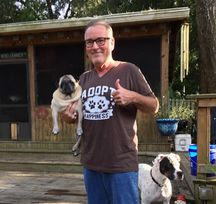 I was also reminded of this recently while engaging with fellow advocate Steve Shank of Lake County, Florida. Steve has been working for years to shine a light on the dark corners of the house that is animal sheltering in his county. He has been met with opposition, resistance and most recently what I would consider at best deception and at worst lies by the current shelter leadership to make things seem better than they are. Steve is just one person. But he did not give up and he stayed true to his vision. He ultimately connected with a county commissioner who got on board with his goals right away and in just a couple of weeks, a no kill consultant will be traveling to his county to meet with local officials and talk about plans for the county to run a no kill animal shelter using progressive and proven programs. I am sure that much like Becky, Steve had no clue where all this would go when he decided to take the risk of being the one to speak out for the animals who could not speak for themselves. The future of Lake County is still unfolding, but I’m sure we can all agree that there are many changes ahead and that the animals in that area are soon to be safer than at any time in the history of the county. Steve and his contacts will face opposition from a host of sources which will surprise many people. PETA, local rescuers and general naysayers will say that no kill is not possible or it means institutionalized hoarding or it costs too much. The problem with the pushback like that is that it seldom survives the reality of communities which change drastically and in very short periods of time. It’s hard to say the world is flat or we didn’t go to the moon or no kill communities are not real when they continue to emerge with increasing speed. Being a voice for animals is hard work. It may cause you to lose what you thought were friendships. It may baffle the people you love who are closest to you who support you, but who may not truly understand the depth of your commitment to bring about change. It may cause you to be vilified by organizations or individuals as they defend the status quo and focus more on the messenger than on the reasons why the message was necessary in the first place. But never doubt the power of individual advocacy related to companion animals whether it is on a general topic or whether is it focused on a state or municipality which is using tax dollars related to animals in ways which are not consistent with our culture and our values in America. Sometimes all it takes is one person putting themselves “out there” to help others find the courage to do the same. Which means that instead of being an army of one, you may find that you are one of many as you work together to change our society and help many more animals than you may ever realize. To borrow a lyric from Sara Bareilles, show me how big your brave is. (images courtesy of Becky Monroe and Steve and Hank Shank)
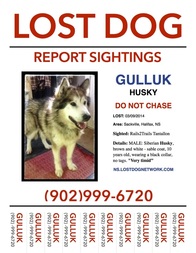 It happens every day. Pets get lost or go missing, people frantically try to find them and in some cases, they never do. As the go-to animal person at my office, I hear about this regularly. The family cat who was scared by fireworks on New Year’s Eve and bolted through an open door. The newly adopted rescue dog who was let outside to relieve herself and ran because she was scared by a car. Maybe the worst one I heard at work was about an elderly dog with limited vision who slipped out a door when some contractors were doing renovation work. The family felt she could not have gone far and did all the right things: searched the neighborhood, knocked on doors, put up flyers, put a “lost” ad in the local paper, put food and her bedding outside. They even went to the municipal animal shelter with photos in hand to look for her, only to be told, “sorry, your dog is not here.” They searched and knocked on doors for days. After almost a week of anguish, the family went back to the shelter one more time on a hunch, only to discover their beloved dog had been there for a week and was scheduled to be euthanized the next day. This family was both lucky and incredibly relieved. Some are not so lucky.  I know that animals end up in shelters for a host of reasons and that some of those reasons have to do with public irresponsibility. But not every animal in a shelter is there because of someone’s fault. We do better at a society to treat each and every shelter animal as someone’s beloved pet who is lost than to presume that “the irresponsible public” does not care enough to keep them safe. Gates get left open by children, contractors pay more attention to ladders and tools than to cats and animals are displaced due to traffic accidents and bad weather. Life happens. It is a reality of our animal sheltering system that healthy and treatable animals are destroyed every day and in most cases these are simply lost pets who could not be identified in order to be reunited with their families. It is a national tragedy. I’m a huge proponent of microchipping all pets whether they live inside of not. You simply must prepare for the possibility that they may end up outside and while collars and tags are also advised (with breakaway collars for cats for safety purposes), nothing can really take the place of what amounts to a barcode for your companion animal to help them be identified if they get lost and end up in a shelter, with a rescue group or at a veterinary office. Most microchips cost very little, including lifetime registration, and really can make the difference in ensuring your pet can be identified if he or she is lost (or even if they are stolen). If you do a simple search on social media using the words “lost found pet” you will come up with a variety of groups and pages all trying to help people find lost pets or trying to reunite found pets with the families searching for them. As valuable as these pages may be, they all have one thing in common. They are geography specific. Just because your dog goes missing from your home in X city doesn’t mean he or she will stay in that city. He may very well end up in Y county for whatever reason and you may never know that. Animals don’t know geographic boundaries and the reality is that once your dog or cat is outside of your control, you really never know how far they will travel either on foot, in the back of a truck bed or in a vehicle or even taken an unknown distance by a good Samaritan who is simply trying to help them. All this leads to an announcement about a wonderful new tool in our animal lover’s toolbox I learned about recently: a website called Helping Lost Pets (HeLP). The website has been active since 2010 and is used across Canada and the United States. The site is the brainchild of Rob Goddard of Goddard Information Systems Limited and is currently funded by his company (with hopes to be funded by sponsors and advertising at some point). I learned about Helping Lost Pets just recently and I’ve been telling everyone I know about it because it’s just such an incredible tool. The concept is simple: the website is a map-based site and is free to use for shelters and animal owners alike. If you run a shelter or animal control department and you pick up animals running at large or found animals reported to you, you enter them on the site with an image and some basics about where they were found. This allows pet owners to look for their lost pets. If you are an animal caregiver and your pet goes missing, you enter them on the site with an image and some basics about where they belong. This allows animal control personnel and social media platforms to help reunite lost pets with their families. Helping Lost Pets describes the website this way: HelpingLostPets.com (HeLP) is a FREE nationwide database for lost and found pets that connects shelters, veterinary clinics, rescue groups, the public, and volunteer groups across the nation to effectively reunite lost pets with their owners. What makes HeLP unique is it is mapbased and fully searchable by breed, location, size, color, gender, and other identifiable information, making it easy to match lost and found pet listings. To ensure our listings stay current, our system automatically contacts owners/finders for status updates at defined intervals. This allows our system to remain uptodate and display only pets that are still missing and truly need our help getting home. We have found that flyers are one of the most effective ways to reunite a lost pet. When someone list a pet, free flyers are instantly generated to provide an effective tool in getting a pet home. What makes the website even more powerful is the many volunteer groups across the country that also use the website to help pets get back home. Lost Dogs of America is their largest partner with chapters in over 30 states now.
If you manage or are affiliated with an animal control agency, rescue group or veterinary office which often takes in lost pets, I cannot encourage you strongly enough to learn about this wonderful resource. If you are a pet owner, I encourage you to take all the normal steps to find your pet: talking to your neighbors, putting up flyers, putting an ad in a local paper, posting on social media, putting food and bedding outside, etc. Having a pet go missing to never be found again can be a life-altering experience for you and can be a life-ending experience for your pet. Please use HeLP. It’s quick, it’s free and you just never know when using that one extra tool in the toolbox will help you be reunited with your beloved companion. Lost Dog Recovery Tips: http://lostdogsofamerica.org/lost-dog/recovery-procedures/ Lost Cat Recovery Tips: http://www.missingpetpartnership.org/recovery-tips/lost-cat-behavior/ I am considered the resident "animal person" where I work. I am known to be outspoken in my advocacy and that means people come to me for advice on a host of issues like re-homing a pet due to a death in the family, finding a lost pet, where to get the best prices for spay and neuter, which local rescue groups are the best, "what do we do about the bat hanging on the outside of the building," etc. I'm no expert on any of these topics, but I do try to steer people in the right direction while perhaps teaching them something in the process. I had an inquiry from a co-worker recently about getting a new-to-him dog in the wake of the passing of a beloved dog. My response was immediate: get a senior. Our attachments to animals are emotional and involve chemistry, so a lot of people gravitate to animals based on appearance or based on assumptions about future behavior. The reality of our culture is that people often get pets from breeders, stores or websites because they equate cost with value or worth and they believe animals from sources other than shelters and rescues are somehow superior. The flip side of that negative bias is that people assume that since animals die in shelters in all but our most progressive communities, they must somehow be damaged or broken. Neither or those assumptions is true. Animals in shelters are there due to no fault of their own and many may very well have been someone's beloved pet. When it comes to animals adopted from shelters, our other reality is that people tend to gravitate toward younger, cuter animals while overlooking animals who are older. In honor of Adopt a Senior Pet Month, here's my pitch for why you should adopt a senior animal. My personal hope is that some day after I retire, I'll adopt only senior pets and work to give them the best years of their lives. They deserve nothing less.  What You See is What You Get. All puppies are cute, but it can often be difficult to tell how large they will grow and what kind of personalities they will have as adults. The same is true for kittens. When you adopt a senior pet, you know exactly what you are getting in terms of size, color and general physical condition. Some senior pets require a period of time to decompress from the circumstances which led them to you, but good shelters and rescues can tell you a lot about the animal's behavior and temperament so you know more about what to expect. Many animals adopted from rescue groups have been in foster homes so the group can tell you a lot about their personalities. The vast majority of animals adopted from shelters and rescues are also fully vetted so you know about their health and they come to you spayed or neutered, vaccinated and microchipped. Seniors are more mellow and predictable. As cute as a puppy may be, the reality is that they take a lot of work. They need structure and boundaries. We are responsible not only for teaching them our language, but learning how to understand the body language they use to communicate with us. Puppies can be destructive when bored and can be mouthy when playing. Even young cats can have a destructive side and can keep you up at night with nocturnal play. A senior dog or cat has been there done that and is simply going to be a more mellow addition to your household. Many senior animals have spent years living with a family and are socialized to people. Senior dogs may know basic commands and may very well be house trained. Even if an older dog is not house trained, many are very easily trained in a short period of time. All dogs and cats need exercise and mental stimulation but your senior pet just needs less to keep him or her entertained. Most senior pets don't require the same level of monitoring or training that younger animals require so they're a good choice for busy families with young children, for older people or for people with disabilities.  Older Dogs (and Cats) Can Learn New Tricks. Training a puppy or a young dog can take a lot of time, effort and repetition. You have to be consistent and help the dog learn what behaviors are expected and which are not appropriate. This includes involving all members of your family, including your children. Adult dogs and cats are simply more focused and learn fast. If your senior dog needs to learn about how to function in your family, you can enroll him or her in an obedience class or consult with a behaviorist so you can learn how to read your dogs' behavior and how you can be a good pack leader. Although people perceive that cats cannot be trained due to their independent nature, most can be trained to follow basic instructions. You Still Have Plenty of Time With Them. Whether or not a dog is a senior is based on breed and size. In general, the larger the breed or size of the dog, the shorter the life span. Many large breeds are considered "senior" by the age of 6. Many smaller breeds are considered senior by the age of 10. Most cats are considered senior between the ages of 7 and 10. Regardless of the age of the senior, older pets still have plenty of great years left. If you get a medium sized dog who is 6 years old, he or she may have 10 good years left. If you get an 7 year old cat, he or she may have more than 10 years with you. You can talk to your veterinarian about ways to keep your senior dog or cat happy and healthy for many years after your lives together begin.  Older Pets are Great for Seniors. A lot of older people don't get new pets because they worry about their ability to care for them for the entire life span of the pet. A dog or cat can live from 10 years to 20 years and some older people are worried that their pets may outlive them. When seniors adopt seniors, it can be a perfect fit. The older person gets an animal who is more mellow and who is more content to just spend time together and the animal gets a new life in a more mellow household where companionship is the focus of the relationship. Many animal shelters have Seniors for Seniors Programs in which adoption fees are either waived or greatly reduced and with programs in place to re-home an adopted pet if something happens to their adoptive family. Be a Hero, Save a Life. Older dogs and cats are often overlooked in shelters and end up being destroyed in all but the most progressive communities even though they are perfectly healthy. When you adopt a senior animal, you are quite literally saving that animal's life. If you have ever loved a animal into their old age, think about what a tragedy it would have been if that animal had never been given an opportunity to live out their last years in comfort. Although you may have fewer years together than with a puppy or kitten, your rescued senior may enhance your life in ways you never imagined. The health benefits of pets is well documented - they lower our blood pressure, reduce our stress levels and provide us with unconditional love that we rarely provide each other as humans. Older pets somehow just seem to know that you have done a good thing to help them and you may find yourself bonding with a senior much faster than you would with a younger animal. (images courtesy of Dana Kay Mattox Deutsch)
There was a time about a decade ago when I considered myself pretty well informed about animal issues simply because I grew up in an animal friendly household and I just like animals. Looking back now, I just didn’t have a clue. Yes, I meant well, but I really was completely out of touch with most of the issues which now take up a lot of space in my head and about which I find myself thinking. A lot.
One of those issues relates to pit bull-type dogs and something called either breed discriminatory legislation (BDL) or breed specific legislation (BSL). I really didn’t have much awareness on this subject until long after the Vick debacle related to his arrest and which led to the 2007 relocation of 47 of the 49 dogs seized from his property (one dog was destroyed early in the process and another was later destroyed for medical reasons). I knew the dogs had been treated in ways most of us simply cannot imagine and they all deserved a second chance. But I really didn’t get into the topic of pit bull-type dogs and legislation issues related to breed until the summer of 2009 when I was asked by my local shelter director to write a “white paper” advocating adoption of “pit bulls” from her shelter. She told me she wanted the paper so she could use it to persuade some of her old guard employees that these dogs were not inherently bad and to convince some folks at city hall that she should not have what then was essentially a de facto ban on these dogs in her building, leading to their destruction. I told her I was not qualified to write a white paper, but that I would be happy to prepare a research paper if it would help her and would save the lives of dogs. I think I knew even the she would never use the paper and so I wrote it to be of use pretty much everywhere, in hopes that someone would get some use out of it. It took me weeks to research and write and when I first shared it in September of 2009, I felt good about it. I had learned things along the way I just did not realize before and developed a great contact in the process through my interaction with Karen Delise, the founder of the National Canine Research Council. The paper got passed around a bit, ended up on the Animal Law Coalition website, and the feedback was generally positive. When I saw my shelter director being interviewed by a local news anchor years later (in late 2012), lamenting the fact that she had so many “pit bulls” she simply had trouble placing, I’ll admit it made me angry. Yes, I just wrote a paper. Yes, it was just research. But had she been genuinely interested in advocating for these dogs and helping to educate those around her on how great they are, all she had to do was read my paper and develop a plan of her own on how to use it. I decided to channel my anger into action and I revised my research paper in February of 2014. Some of the end links no longer work, but I stand by my research all of which is found here. When you put the media hype aside and you take a real look not only at the breeds of dogs we all call “pit bulls,” but at the research regarding factors which cause fatal dog attacks, the reality is that these dogs are no different than any other dogs. All dogs have teeth. All dogs bite. How we treat dogs, objectify dogs, use dogs, whether we spay and neuter dogs and whether we neglect or abuse dogs all play a role in their behavior. I am a huge proponent of breed blind legislation and I firmly believe that all dogs should be treated as individuals. I’m fine with legislation which is focused on public safety, but which is completely silent regarding dog breed. Some dogs really are dangerous. Some dogs are just broken, for lack of a better word, and should not be around people. But to take entire breeds of dogs – or worse yet – perceived breeds of dogs and try to legislate them is not only unconstitutional, but it is entirely ineffective. I was on Facebook today and two items in my news feed stood in stark contrast to each other and served as a reminder that legislating dogs by breed simply does not work and is just wrong.
If you really care about dogs or just about how municipalities spend your money in the name of public safety and through use of police power, please educate yourself about the history of the types of dogs we call “pit bulls” and about the real reasons behind dog aggression. The best way for you to help man's best friend is to be an informed animal lover or animal advocate. If the whole subject is a bit too overwhelming for you and you need a place to start, well, my research paper may just help you. I work in the legal field and am also considered the resident "animal person" in my law firm. When people need help placing an animal, they ask me. When they need help adopting an animal, they call me. Every now and then our law librarian (a dog lover) passes along a legal opinion brought to his attention related to animals and we invariably have some discussion about the case. It makes my job more interesting when my animal welfare interests become related to how I spend my days. On June 6, 2016, the Georgia Supreme Court rendered an opinion in a case involving a dog who became gravely ill after having been administered medication improperly by a boarding facility. Her owners ultimately spent almost $70,000 trying to save Lola, their 8 ½ year old Dachshund mix they had adopted from a rescue center at the age of two. They were not able to save her and Lola later died. The case ended up on appeal to "the Supremes" related to issues about the value of the dog. Her family argued they were entitled to compensation for expenses paid treating her and trying to save her life. The boarding facility argued that because she was obtained from a rescue center, she had no value and the family was not entitled to compensation for her veterinary care because the amount they spent was unreasonable. I found it very interesting that the court had to go back to cases from more than a hundred years ago for legal precedent. People may not realize this happens, but it does all the time. The law is an evolving, ever changing landscape. But if the last cases factually similar to one now are from 1850, they are still legal precedent. In the end, the Supremes ruled, as they had to, in accordance with Georgia law. The case was sent back to the trial court in accordance with the ruling that the family was entitled to seek damages for the loss of the value of the dog and for reasonable veterinary expenses. The court was not in a position to allow the family to seek damages for the sentimental value of Lola just because Georgia law doesn't provide for that remedy. In spite of the limitations put on the ruling, I found some of the wording of the opinion to be quite enlightened and I see it as an indication that times are changing related to how we view the "value" of our companion animals. The court began the opinion with this sentence: "The subject matter of this case is near and dear to the heart of many a Georgian in that it involves the untimely death of a beloved family pet and concerns the proper measure of damages available to the owners of an animal injured or killed through the negligence of others." The court also stated the following near the end of the opinion, which I choose to interpret consistent with my own values: "We agree with those courts which have held that the unique human-animal bond, while cherished, is beyond legal measure." Time will tell how our laws continue to evolve related the value of our companion animals in our legal system. If you're anything like me, your dog is priceless to you and you want your laws to reflect that if anything were to ever happen to them due to the conduct of others. Lola was one dog. But she could have been my dog or yours. You can read the entire opinion in the case of Barking Hound Village, LLC v. Monyak here. (image courtesy of Peace and Paws Dog Rescue, Inc.)
|
AuthorI am an animal welfare advocate. My goal is to help people understand some basic issues related to companion animals in America. Awareness leads to education leads to action leads to change. Archives
July 2024
Categories
All
image courtesy of Terrah Johnson
|
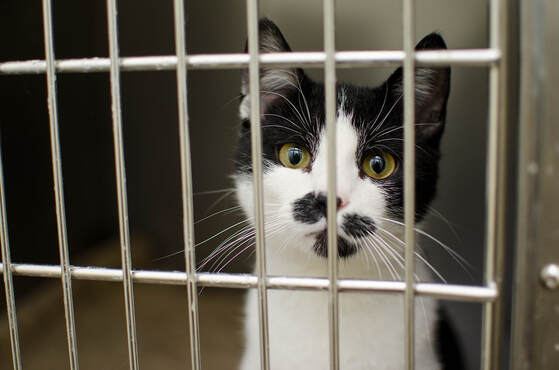
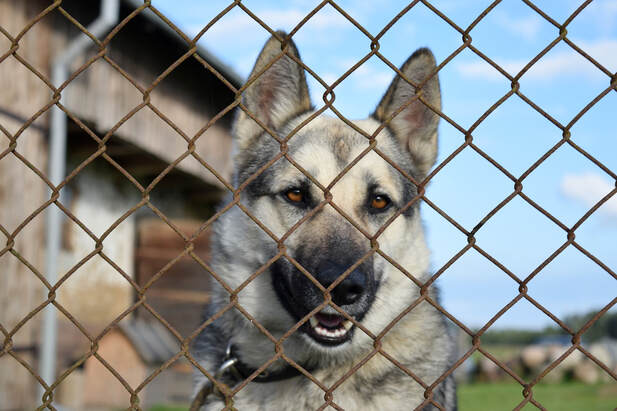
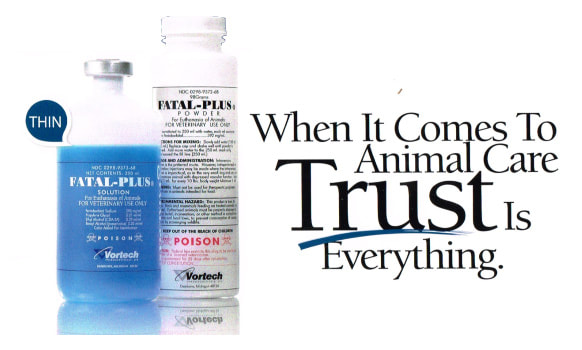

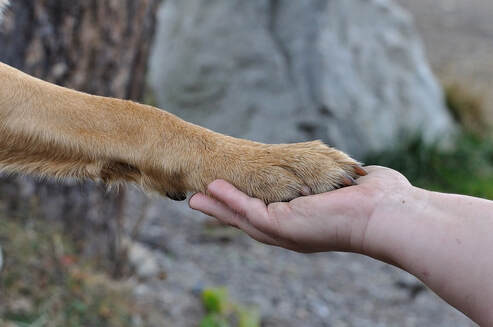
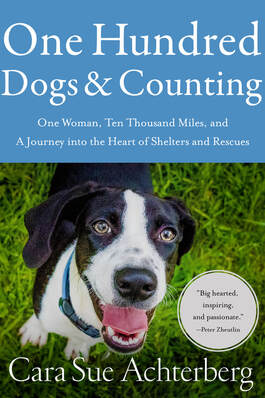

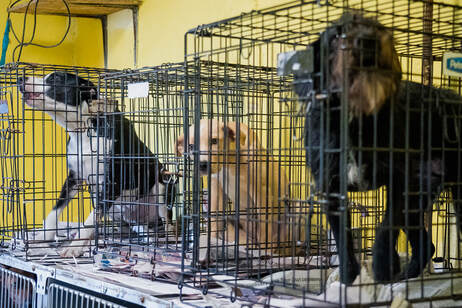
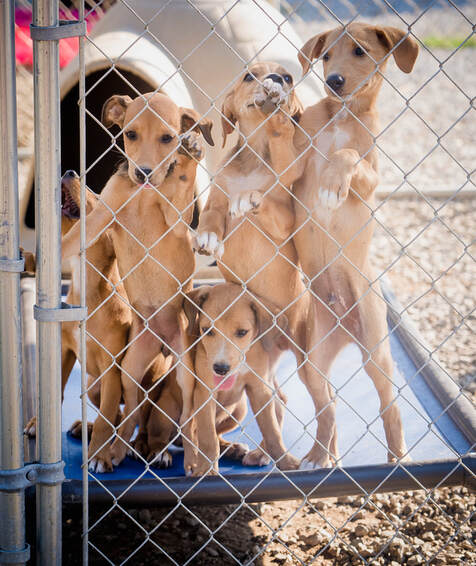
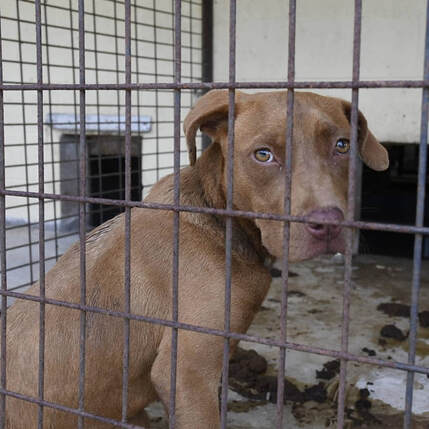
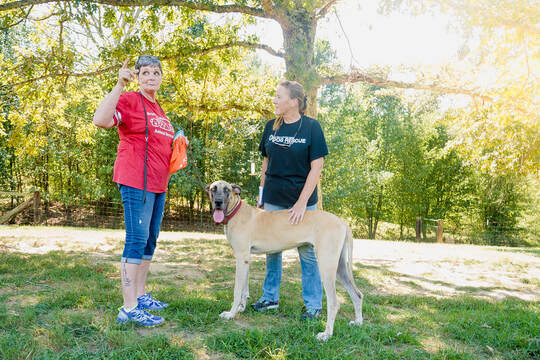





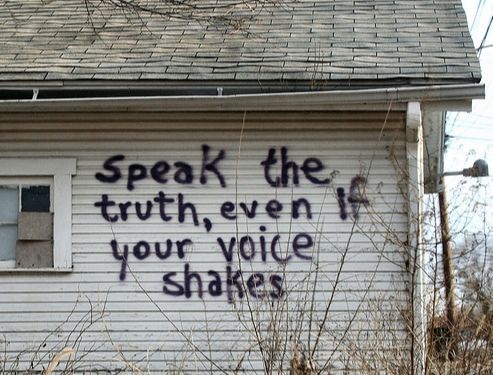

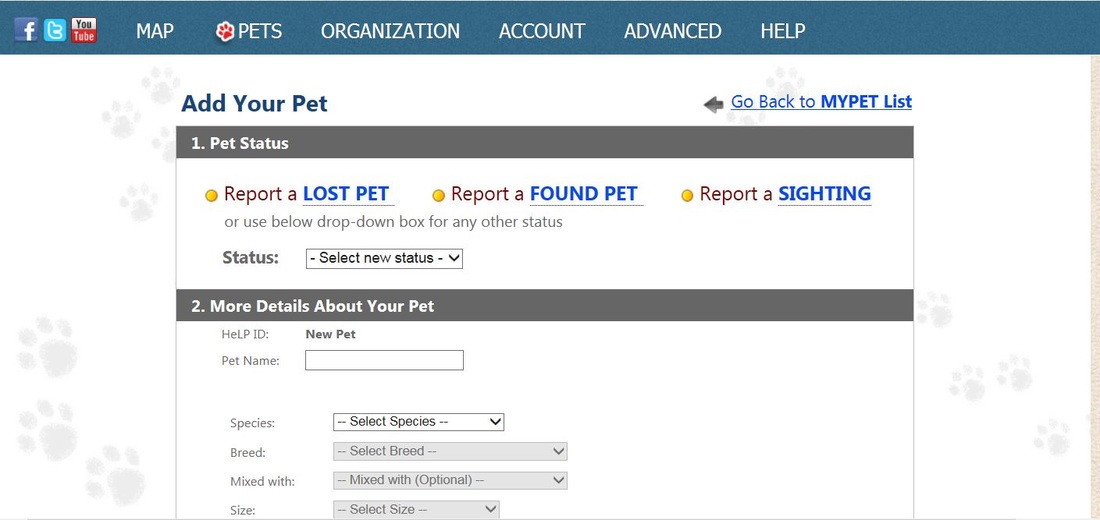
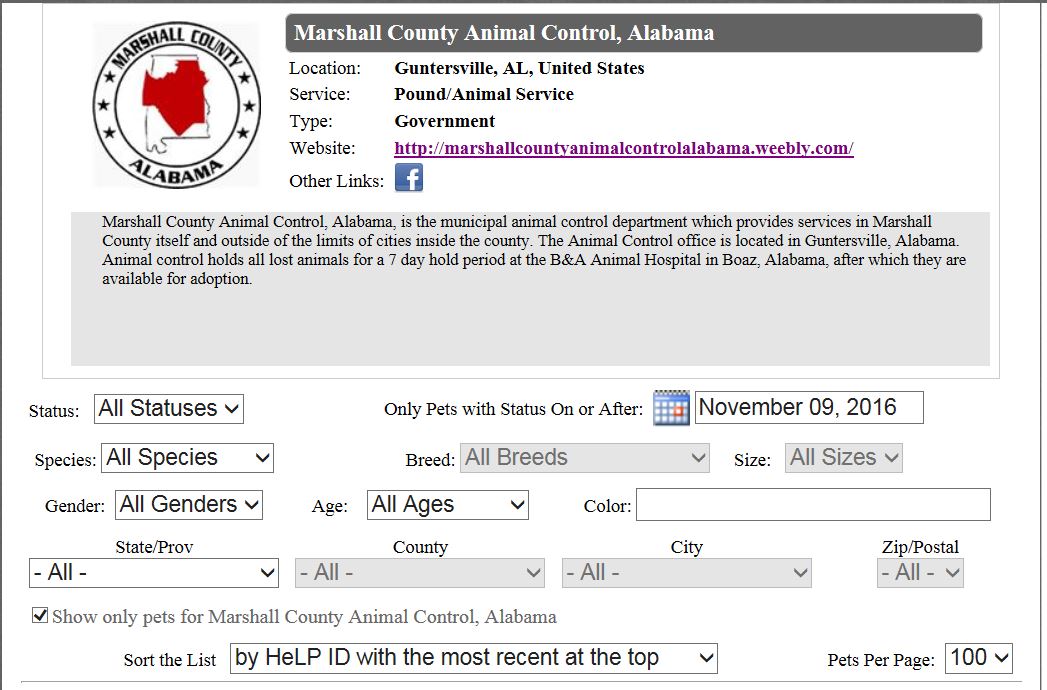
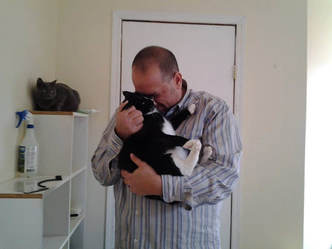

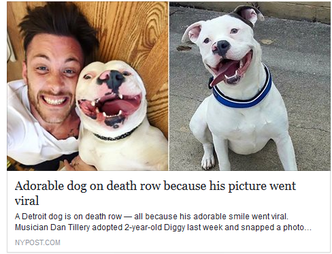
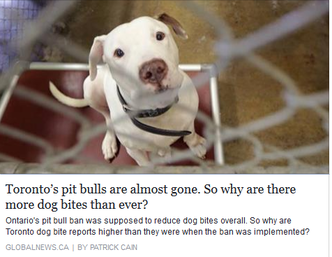
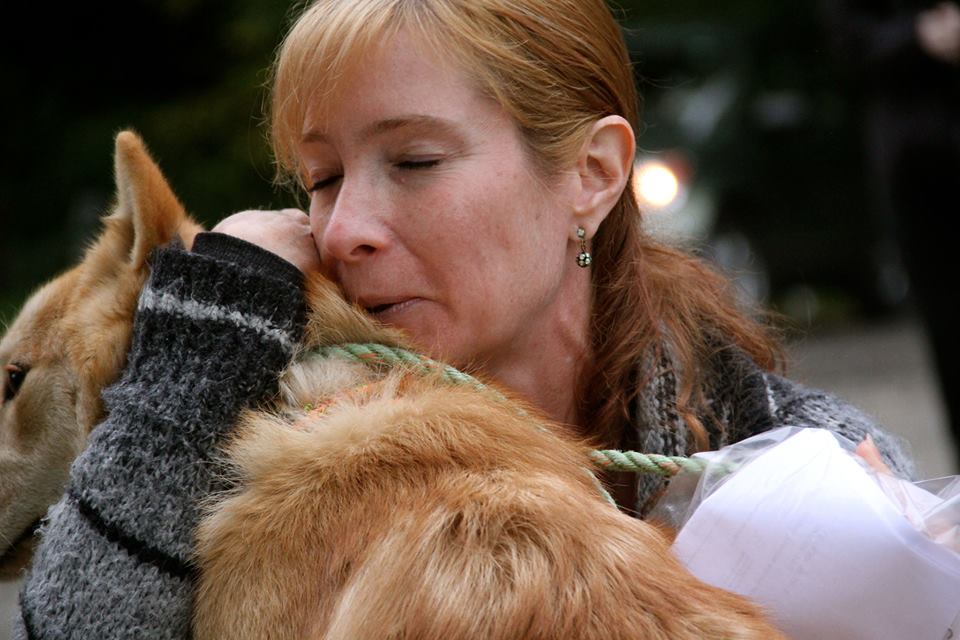
 RSS Feed
RSS Feed